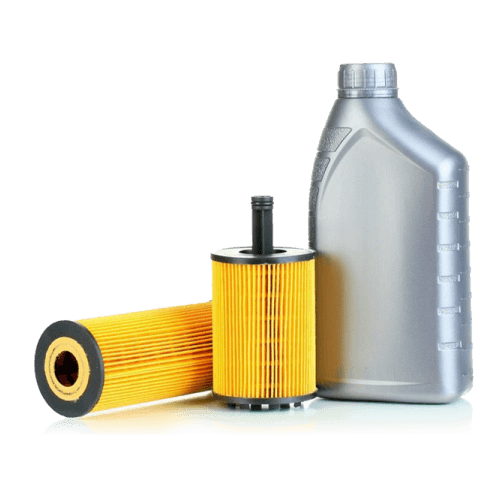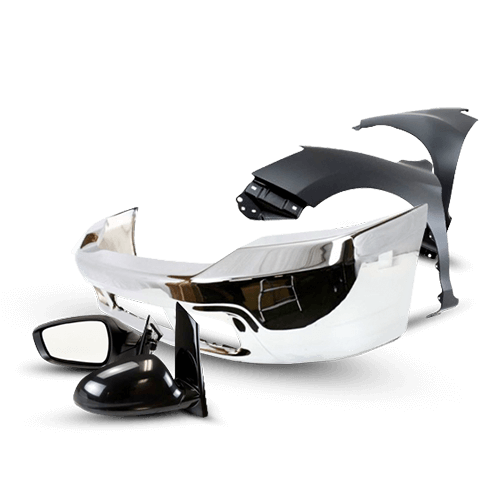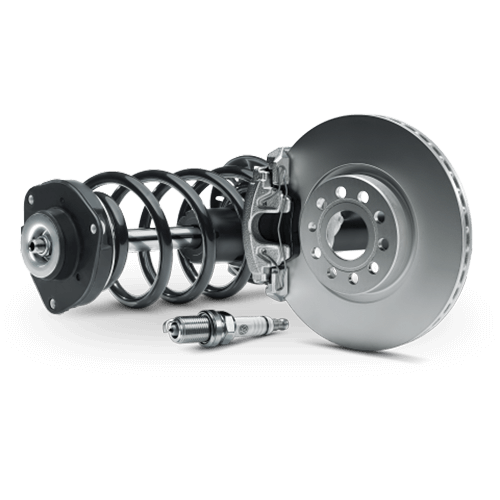
The Right Way to Measure Minimum Brake Pad Thickness for Safer Brakes
Key Takeaway
Understanding proper brake pad thickness measurement is essential for vehicle safety. New brake pads typically measure 10-12mm, while the minimum safe thickness ranges from 2-3mm depending on manufacturer specifications. Regular measurement using proper tools helps prevent brake failure, reduces repair costs, and ensures optimal stopping performance. This guide covers measurement techniques, safety thresholds, and replacement indicators for maintaining safe braking systems.
____________________
Maintaining proper brake pad thickness stands as one of the most critical aspects of vehicle safety that directly impacts your ability to stop effectively. Whether you're a car owner performing routine maintenance checks or a professional technician servicing customer vehicles, understanding how to accurately measure and evaluate brake pad wear determines when replacement becomes necessary for safe operation. This comprehensive guide explores the essential techniques for measuring brake pad minimum thickness, interpreting measurement results against safety standards, and recognizing the warning signs that indicate worn brake pads require immediate attention.
Technical Background: What Brake Pads Are and Why They Wear
Brake pads are friction components in disc braking systems. When you press the brake pedal, hydraulic fluid pushes the calipers, squeezing the brake pads against the brake discs (also known as rotors). This friction slows the wheel and brings the car to a stop.

Over time, the friction material on brake pads wears down. Several factors affect this wear rate:
-
Driving style: Aggressive braking or stop-start driving wears pads faster.
-
Vehicle type and weight: Heavier vehicles place more load on pads.
-
Brake pad material: Organic pads typically wear quicker than ceramic or semi-metallic ones.
-
Environment: Mountainous terrain, frequent towing, or city traffic increase brake usage.
Once the pad material becomes too thin, the pads cannot safely dissipate heat, leading to reduced braking efficiency and potential rotor damage.
Brake Pad Thickness Standards
The thickness of new brake pads varies depending on vehicle type, manufacturer specifications, and brake system design, though most passenger vehicles feature pads measuring between 10mm and 12mm when brand new. Heavy-duty vehicles and performance cars often utilize thicker pads ranging from 12mm to 15mm to accommodate increased braking demands and heat dissipation requirements. Understanding these baseline measurements provides the foundation for evaluating wear patterns and determining replacement timing throughout the pad's service life.
Manufacturers establish specific minimum brake pad thickness specifications that represent the absolute lowest safe operating threshold for their brake systems. These minimums typically fall between 2mm and 3mm of remaining friction material, though some manufacturers specify higher minimums of 4mm for optimal safety margins. Operating below these thresholds compromises braking effectiveness, increases stopping distances, and risks damage to brake rotors from metal-to-metal contact when friction material becomes completely depleted.
The relationship between pad thickness and braking performance follows a predictable pattern where stopping power gradually decreases as pads wear thinner. Fresh pads provide maximum friction surface area and heat absorption capacity, while worn pads struggle to generate adequate friction and dissipate heat effectively during repeated braking cycles. This degradation accelerates exponentially once pads approach minimum specifications, making timely replacement crucial for maintaining safe vehicle operation.
How to Measure Brake Pad Thickness Accurately
Performing accurate brake pad measurement requires proper tools and systematic inspection procedures that ensure reliable results. The most precise method involves using a brake pad gauge or digital caliper specifically designed for automotive measurements, though experienced technicians can estimate thickness visually through wheel openings on many vehicles. Before beginning any measurement, ensure the vehicle sits level on stable ground with the parking brake engaged and wheels properly secured to prevent movement during inspection.

Visual inspection through wheel spokes provides a preliminary assessment of pad condition without removing wheels, though this method offers limited accuracy and visibility depending on wheel design and caliper configuration. Look for the friction material sandwiched between the backing plate and rotor surface, comparing its thickness to the metal backing plate which typically measures 4-5mm. If the friction material appears thinner than the backing plate or shows less than 1/4 inch remaining, immediate detailed inspection becomes necessary.
For precise measurements, remove the wheel to access the brake caliper and pads directly, allowing thorough inspection of both inner and outer pad surfaces. Position your measuring tool perpendicular to the pad surface, measuring from the backing plate to the friction material's outer edge at multiple points to account for uneven wear patterns. Document measurements for each pad position, noting any significant variations that might indicate caliper problems or suspension issues causing irregular wear.
Digital inspection cameras and specialized brake measurement tools enable assessment without wheel removal on some vehicles, threading through wheel openings to capture pad thickness readings and visual condition. These tools prove particularly valuable for quick inspections during routine service appointments, though they cannot replace comprehensive visual inspection when addressing specific brake concerns or unusual wear patterns.
Brake Pad Thickness Chart and Replacement Guidelines
Understanding when brake pads require replacement involves comparing current measurements against manufacturer specifications and industry-standard brake pad thickness chart guidelines. Most automotive professionals follow a graduated replacement schedule that accounts for driving conditions, vehicle usage patterns, and safety margins beyond absolute minimums. New pads measuring 10-12mm typically provide 30,000-70,000 miles of service depending on driving habits, vehicle weight, and environmental factors affecting wear rates.
Brake Pad Thickness Reference Chart
|
Pad Thickness (mm) |
Pad Thickness (inches) |
Condition |
Recommended Action |
Remaining Life % |
|
12-10 mm |
1/2" - 3/8" |
New/Excellent |
No action needed |
100-75% |
|
10-8 mm |
3/8" - 5/16" |
Good |
Monitor regularly |
75-50% |
|
8-6 mm |
5/16" - 1/4" |
Fair |
Plan replacement soon |
50-35% |
|
6-4 mm |
1/4" - 5/32" |
Worn |
Replace within 1,000 miles |
35-20% |
|
4-3 mm |
5/32" - 1/8" |
Critical |
Replace immediately |
20-10% |
|
3-2 mm |
1/8" - 3/32" |
Minimum/Unsafe |
Do not drive |
<10% |
|
<2 mm |
<3/32" |
Dangerous |
Metal-to-metal risk |
0% |
The recommended brake pad thickness for replacement generally falls between 3mm and 4mm of remaining friction material, providing adequate safety margin before reaching critical minimums. This threshold allows time for scheduling service appointments without risking brake failure or rotor damage from excessive wear. Professional technicians often recommend replacement at 4mm for customers with aggressive driving styles or those operating vehicles in mountainous terrain where brake demands increase significantly. When shopping for replacement pads, consider checking brake pad collections that meet your vehicle's specifications.
Converting between measurement systems helps interpret specifications from various sources, with most brake pad thickness mm measurements easily converting to fractional inches for comparison. A new 12mm pad equals approximately 1/2 inch, while the 3mm replacement threshold represents roughly 1/8 inch of remaining material. Understanding these conversions enables accurate assessment regardless of measurement tools available or specification formats encountered.
Environmental factors significantly influence replacement intervals beyond simple thickness measurements, with severe duty applications requiring earlier replacement despite adequate remaining material. Frequent towing, mountain driving, stop-and-go traffic, and track use accelerate pad deterioration through increased heat cycling and mechanical stress. These conditions warrant replacement at higher thickness thresholds to maintain optimal braking performance and prevent unexpected failure during demanding operation. For complete brake system upgrades, explore brake kit options designed for various driving conditions.

Recognizing Signs of Worn Brake Pads
Even without measuring thickness, your car may give warning signs of brake wear. Watch for:
-
Squealing noises: Many pads have wear indicators that squeal when thin.
-
Grinding sound: Suggests pads are completely worn and metal is contacting the rotor.
-
Longer stopping distances: Reduced pad material affects performance.
-
Vibration under braking: Could mean worn pads or warped discs.
- Brake warning light: Some modern vehicles have electronic wear sensors.
Modern vehicles increasingly feature electronic brake pad wear sensors that monitor thickness continuously and illuminate dashboard warning lights when replacement becomes necessary. These systems eliminate guesswork by alerting drivers precisely when pads reach predetermined thickness thresholds, though sensor replacement during pad service adds modest additional cost. Understanding your vehicle's specific warning systems ensures prompt response to wear notifications before safety becomes compromised. Quality replacement options from trusted manufacturers like Bosch brake pads often include new wear sensors for complete system restoration.
Safety Considerations and Best Practices
Maintaining safe brake pad thickness requires understanding that minimum specifications represent absolute safety limits rather than recommended replacement points for optimal performance. Operating at minimum thickness eliminates safety margins for unexpected situations like emergency stops, trailer towing, or mountain descents where brake demands spike dramatically. Professional technicians typically recommend replacement before reaching minimums to preserve these critical safety margins that protect against brake fade or failure during extreme use.
The question of how many mm of brake pad is safe depends on multiple factors beyond simple thickness measurements, including vehicle type, driving conditions, and risk tolerance. While 3mm represents a common minimum specification, this threshold assumes normal driving conditions without extraordinary demands on the brake system. Heavy vehicles, performance driving, or mountainous terrain warrant maintaining greater thickness margins to ensure adequate reserve capacity for demanding situations.
Proper brake system maintenance extends beyond monitoring pad thickness alone to encompass complete system health including fluid condition, rotor thickness, and caliper operation. Contaminated brake fluid reduces boiling point and compromises pedal feel, while worn rotors amplify pad wear and reduce overall braking effectiveness. Addressing these related components during pad replacement ensures optimal system performance and prevents premature wear of new components. Browse comprehensive brake system components to maintain complete braking system integrity.
Documentation of brake measurements and service history proves valuable for warranty claims, resale value, and identifying unusual wear patterns indicating underlying problems. Recording initial thickness of new pads, measurement dates, mileage intervals, and wear rates creates comprehensive maintenance records that demonstrate proper vehicle care. This information helps technicians diagnose recurring problems and validates warranty coverage when premature wear occurs.
Recommended Brake Components and Collections
When it comes to replacing your brake pads after measuring and determining they've reached minimum thickness, selecting quality components from reputable suppliers ensures optimal safety and performance. Here are some carefully curated collections and product recommendations from BestParts.ca that cater to various vehicle needs and driving requirements.
Premium Brake Pad Collections
For everyday driving and reliable stopping power, explore the comprehensive brake pad collection featuring options from trusted manufacturers. These pads offer the ideal balance of performance, longevity, and value for most passenger vehicles. German engineering enthusiasts will appreciate the Textar brake pads, known for their OEM-quality construction and consistent performance across temperature ranges.

Performance-oriented drivers seeking enhanced stopping power should consider Brembo brake components, renowned for their racing heritage and superior heat management capabilities. For those preferring proven OEM quality, Bosch brake pads deliver the reliability and precise fitment that professional technicians trust for customer vehicles.
Complete Brake System Solutions
When brake pad measurement indicates replacement time, consider upgrading your entire brake system for maximum effectiveness. The brake kit collection offers complete packages including pads, rotors, and hardware, ensuring all components work together optimally. These kits eliminate compatibility concerns and often provide better value than purchasing components separately.
For enhanced performance and aesthetic appeal, drilled and slotted brake rotors paired with premium pads deliver improved heat dissipation and reduced brake fade during spirited driving. Budget-conscious consumers can find excellent value in the cheap brake rotors and pads Canada collection, offering reliable stopping power without compromising safety.
Specialized and OEM-Quality Options
European vehicle owners will find exceptional compatibility and performance in the ATE brake components and Zimmermann brake products collections, both offering OEM-specification parts for German vehicles. The Wagner brake collection provides comprehensive coverage for domestic and Asian vehicles with their ThermoQuiet technology for reduced noise and improved comfort.

For those seeking premium ceramic formulations that minimize dust and extend rotor life, Akebono brake pads represent the pinnacle of Japanese brake technology. Professional repair shops and fleet operators appreciate Delphi brake components for their consistent quality and comprehensive vehicle coverage.
Supporting Components and Fluids
Proper brake maintenance extends beyond pad replacement to include system fluids and supporting components. The brake fluids collection features high-performance options from Motul and ATE fluids that maintain consistent pedal feel and resist fade under extreme conditions. When replacing pads, inspect and service brake calipers to ensure even pad wear and optimal clamping force.
Value-Oriented Solutions
The discount brakes collection provides cost-effective options for routine maintenance without sacrificing safety or performance. These products undergo rigorous testing to meet industry standards while offering significant savings compared to dealership prices. For comprehensive brake system overhauls, browse the complete brake collection featuring everything from wear sensors to mounting hardware.
Trusted Brand Collections
Select from established manufacturers with proven track records in the automotive industry. TRW brake components offer OEM-quality replacement parts trusted by vehicle manufacturers worldwide. Jurid brake pads provide European-specification friction materials for optimal performance in diverse driving conditions. The Ferodo collection features racing-inspired technology adapted for street use, delivering exceptional stopping power when you need it most.
When measuring reveals your brake pads approaching minimum thickness, investing in quality replacement components from these curated collections ensures your vehicle maintains safe, reliable stopping performance while potentially improving upon original equipment specifications.
Conclusion: Stay Ahead of Brake Wear
Understanding and monitoring brake pad thickness is one of the simplest yet most effective ways to keep your car safe and avoid costly car brake repair. By checking pads regularly, recognizing warning signs, and replacing them before they reach minimum thickness, you protect not only your vehicle but also your passengers and everyone on the road.
FAQs
What is the minimum brake pad thickness for safe driving?
The minimum brake pad thickness typically ranges from 2-3mm depending on manufacturer specifications. However, most professionals recommend replacement at 3-4mm to maintain adequate safety margins for emergency braking situations.
How thick are new brake pads in mm?
New brake pads generally measure between 10-12mm for standard passenger vehicles. Heavy-duty or performance vehicles may have thicker pads ranging from 12-15mm to handle increased braking demands.
How often should I check my brake pad thickness?
Check brake pad thickness every 10,000-12,000 miles or during tire rotations. Increase inspection frequency if you notice changes in braking performance, hear unusual noises, or drive in severe conditions.
Can I measure brake pad thickness without removing the wheel?
Yes, many vehicles allow visual inspection through wheel spokes, though accuracy is limited. For precise measurements, wheel removal provides better access to measure pads with appropriate tools.
What's the difference between 3mm and 4mm brake pad thickness?
The 1mm difference represents approximately 25-30% more usable friction material. While 3mm may be safe, 4mm provides better heat dissipation, shorter stopping distances, and additional safety margin for unexpected situations.
How do I know when my brake pads need replacing without measuring?
Listen for squealing sounds from wear indicators, feel for increased pedal travel or pulsation, and watch for brake warning lights. Visual inspection showing pads thinner than 1/4 inch also indicates replacement need.






















































